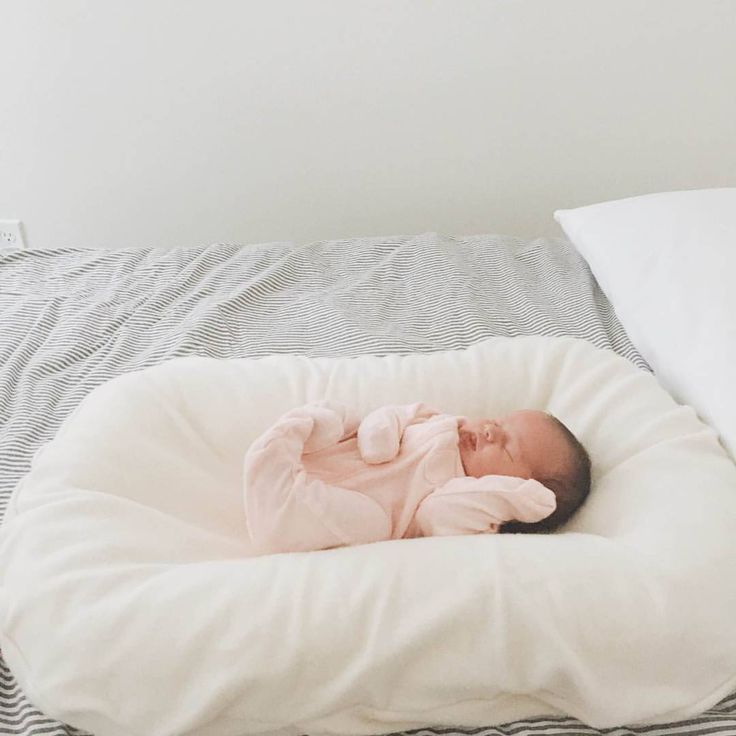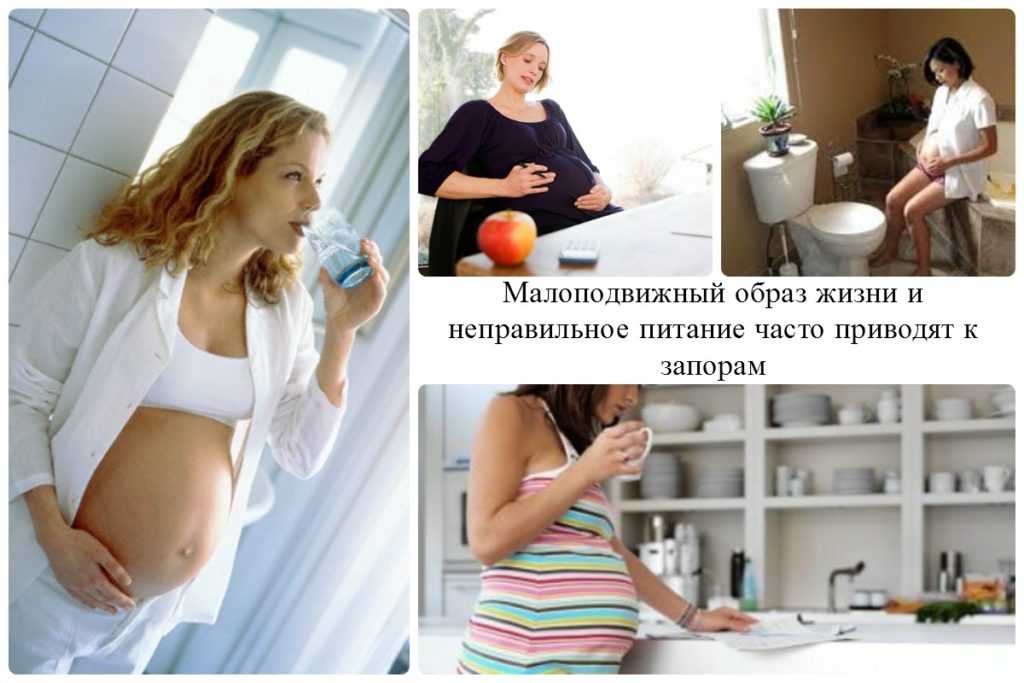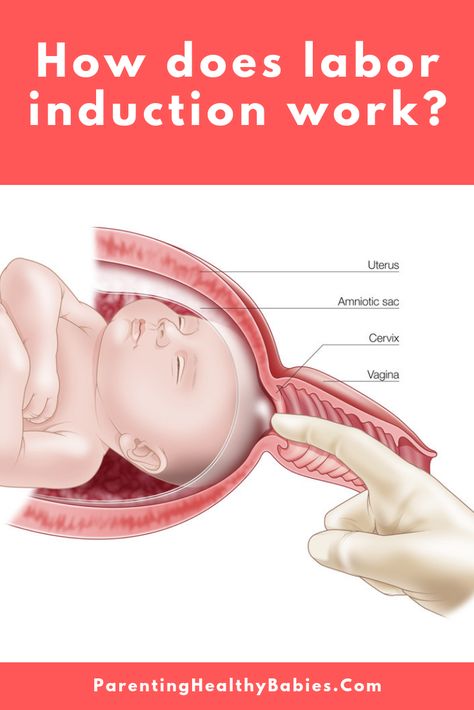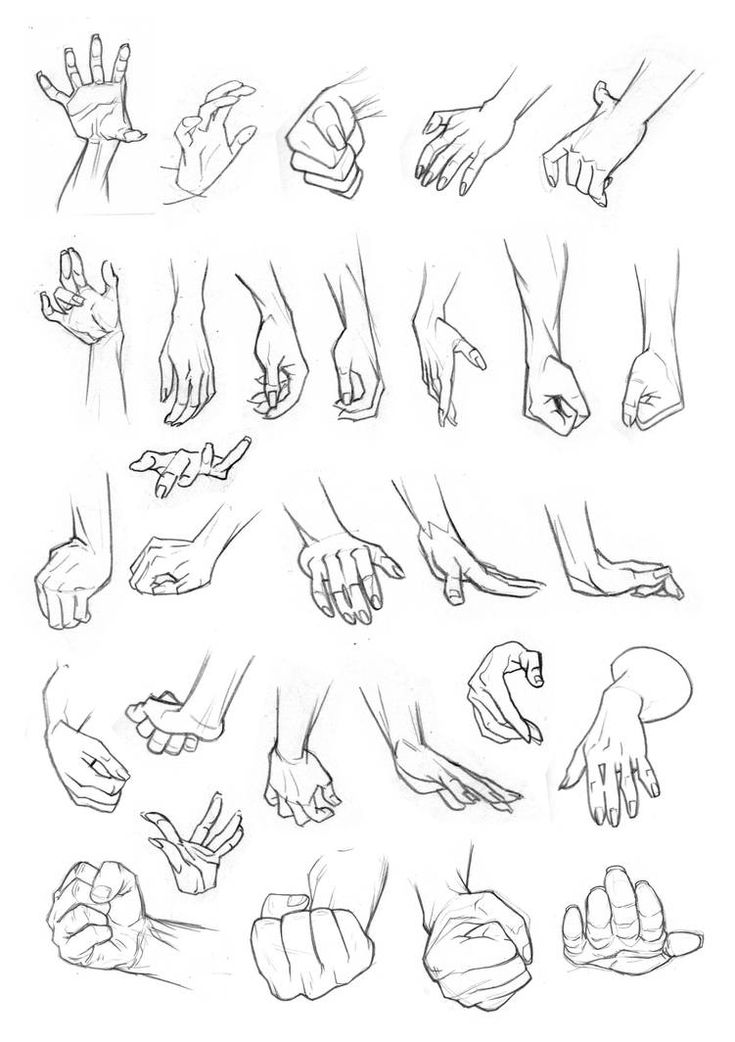When is the best time to get pregnant after period
Right Time For Sex , When Do You Ovulate ?
When are you more likely to conceive?
We’re talking about the 'fertile window’ – the days in a woman’s menstrual cycle when pregnancy is possible. The ‘fertile window’ depends on the length of the menstrual cycle, which varies among women.
The ‘fertile window’ is the day an egg is released from the ovary (ovulation) and the five days beforehand. Having sex (intercourse) during this time gives you the best chance of getting pregnant.
Ovulation Calculator
What day did you your most recent period start?
Number of days in your cycle Please select20 Days21 Days22 Days23 Days24 Days25 Days26 Days27 Days28 Days29 Days30 Days31 Days32 Days33 Days34 Days35 Days36 Days37 Days38 Days39 Days40 Days41 Days42 Days43 Days44 Days45 Days
Your ovulation day
Most fertile time
-
What is an ovulation calculator and how does it help you get pregnant?
This ovulation calculator or ovulation calendar can help you work out your most fertile time.
These are the days you are most likely to get pregnant.
It can also estimate your due date if you do become pregnant during your next fertile days.
Others ways to help you work out when you're ovulating:
- Notice changes in vaginal mucus
A few days before ovulation, you may notice your vaginal mucus becomes clear, slick and slippery, and feels a bit like egg white.
This is a sign that ovulation is about to happen. It’s the best time to have sex, as sperm travel more easily in this kind of mucus.
- Use an ovulation predictor kit
You can use a predictor kit from a supermarket or pharmacy, to test your urine for signs of ovulation. If you start testing your urine a few days before the day you next expect to ovulate, a positive result means you are going to ovulate within the next 24 to 36 hours (one to two days).

-
Facts about timing
Ovulation is when a mature egg is released from the ovary. The egg then moves down the fallopian tube where it can be fertilised. If sperm are in the fallopian tube when the egg is released, there is a good chance that the egg will be fertilised, creating an embryo, which can grow into a baby.
Pregnancy is technically only possible if you have sex during the five days before ovulation or on the day of ovulation. But the most fertile days are the three days leading up to and including ovulation. Having sex during this time gives you the best chance of getting pregnant.
By 12-24 hours after ovulation, a woman is no longer able to get pregnant during that menstrual cycle because the egg is no longer in the fallopian tube.
There’s almost no chance of getting pregnant if you have sex before or after the fertile window (but if you’re not trying to get pregnant, don’t rely on this – contraception is your best option!).

-
How to know when you’re ovulating
Knowing when you ovulate can help you plan for sex at the right time and improve your chance of getting pregnant. You can keep track of your menstrual cycles on a chart, in a diary, or on a free period-tracker app on your smartphone.
To work out the length of your menstrual cycle, record the first day you start bleeding (first day of your period). This is day 1. The last day of your cycle is the day before your next period begins.
- What is a ‘menstrual cycle’ and a ‘period’?
Some people think the ‘menstrual cycle’ and a ‘period’ are the same thing.
A period is when you bleed (or menstruate).
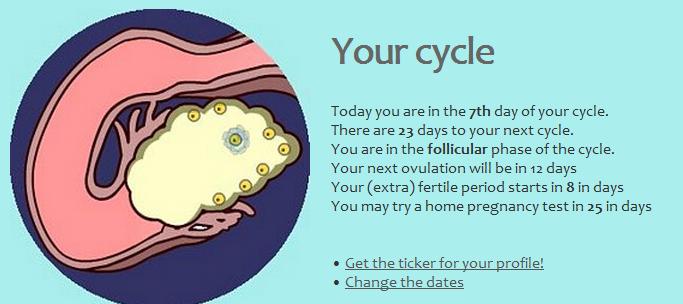
A menstrual cycle starts on the day when a period starts (day 1) and ends the day before the next period. A cycle’s length is considered normal if it’s between 21 and 35 days. They can vary between women and from one cycle to the next.
- Working out your ‘average’ menstrual cycle length
If your menstrual cycles are different lengths (most women’s cycles are) you can work out your average cycle length.
The number of days in a woman’s menstrual cycle can vary month to month. Periods are not always regular. It can be useful to work out an ‘average’ cycle length, based on the length of three menstrual cycles, to estimate when you’re most likely to be ovulating.
If you add the number of days in three cycles and divide the total number by three, it gives you your average cycle length.
Example
Sarah tracked her last three menstrual cycles by counting the time from the first day of one period, to the day before the next period.
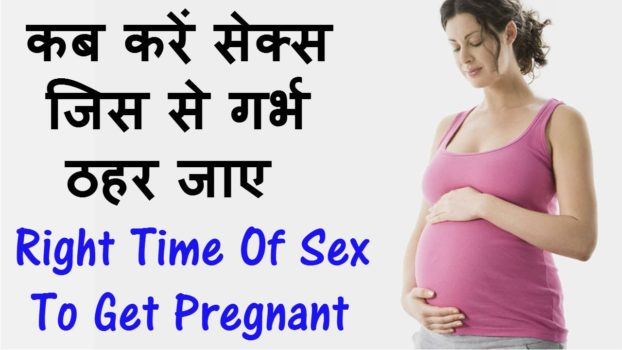
Cycle 1 was 28 days; Cycle 2 was 32 days; Cycle 3 was 27 days
28 + 32 + 27 = 87
87 divided by 3 = 29
So the average length of Sarah’s menstrual cycles is 29 days.
- Working out your most fertile days
When you know your average menstrual cycle length, you can work out when you ovulate.
Ovulation happens about 14 days before your period starts.
- If your average menstrual cycle is 28 days, you ovulate around day 14, and your most fertile days are days 12, 13 and 14.
- If your average menstrual cycle is 35 days ovulation happens around day 21 and your most fertile days are days 19,20 and 21.
- If you have shorter cycles, say 21 days, ovulation happens around day 7 and your most fertile days are days 5, 6 and 7.
Your most fertile days are the three days leading up to and including the day of ovulation.
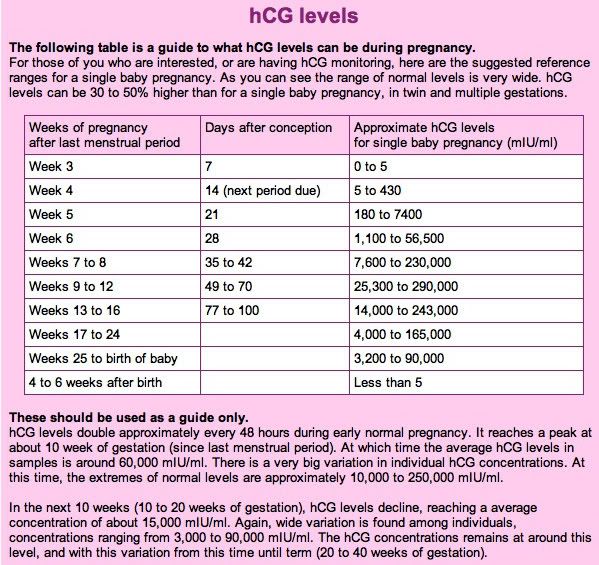
Some women have very irregular cycles or find it difficult to work out an average cycle length. This can make it hard to work out when ovulation happens. If it’s all too hard, having sex every 2-3 days covers all bases and improves your chance of getting pregnant.
Myth busting
- MYTH
A woman can get pregnant any time of the month.
- FACT
A woman can only get pregnant on a few days during her menstrual cycle.
Why?
Because eggs and sperm only live for a short time:
- Sperm live for around five days.
- Eggs can only be fertilised for around 24 hours (one day) after being released from the ovary.
Eggs and sperm need to come together at the right time for fertilisation to happen to create an embryo.
Getting the timing right
If you're trying to get pregnant, timing is everything. Dr Karin Hammarberg explains how to work out when you are ovulating and the right time to have sex to improve your chance of pregnancy.
-
What are the chances?
Having sex as close as possible to the time of ovulation increases the chance of pregnancy.
If a woman has sex six or more days before she ovulates, the chance she will get pregnant is virtually zero.
If she has sex five days before she ovulates, her probability of pregnancy is about 10 percent.
If she has sex on the day of ovulation, or the two days before, the chance of getting pregnant is around 30 percent.
These are average figures and depend on a woman’s age.
When does preconception health begin?
Professor Sarah Robertson, Director of Robinson Research Institute, University of Adelaide, highlights the key time before pregnancy that your health is most important to ensure your child has the best start to life.
How to know you are ovulating
Kerry Hampton, a registered nurse and fertility specialist, discusses the importance of fertility awareness, and how to determine your fertile window to improve your chances of conceiving.
- References
- American Society for Reproductive Medicine, Optimizing natural fertility, https://www.reproductivefacts.org/news-and-publications/patient-fact-sheets-and-booklets/documents/fact-sheets-and-info-booklets/optimizing-natural-fertility/
- Berglund Scherwitzl, et al. (2015). Identification and prediction of the fertile window using Natural Cycles. The European Journal of Contraception and Reproductive Health Care, 20(5), 403-408. doi:10.3109/13625187.2014.988210
- Ecochard, R., et al. (2015). Self-identification of the clinical fertile window and the ovulation period.
 Fertility and Sterility, 103(5), 1319-1325.e1313. doi: http://dx.doi.org/10.1016/j.fertnstert.2015.01.031
Fertility and Sterility, 103(5), 1319-1325.e1313. doi: http://dx.doi.org/10.1016/j.fertnstert.2015.01.031 - Pfeifer, S., et al. (2017). Optimizing natural fertility: a committee opinion. Fertility and Sterility, 107(1), 52-58. doi: 10.1016/j.fertnstert.2016.09.029
- Stanford, J. B. (2015). Revisiting the fertile window. Fertility and Sterility, 103(5), 1152-1153. doi: http://dx.doi.org/10.1016/j.fertnstert.2015.02.015
- Stanford, et al. (2002). Timing intercourse to achieve pregnancy: current evidence. Obstetrics and Gynecology, 100(6), 1333-1341.
- Stephenson, J., et al. (2018). Before the beginning: nutrition and lifestyle in the preconception period and its importance for future health. The Lancet, 10.1016/S0140-6736(18)30311-8 doi: 10.1016/S0140-6736(18)30311-8
- Vélez, M. Pet al. (2015). Female exposure to phenols and phthalates and time to pregnancy: the Maternal-Infant Research on Environmental Chemicals (MIREC) Study. Fertility and Sterility.
 doi: 10.1016/j.fertnstert.2015.01.005
doi: 10.1016/j.fertnstert.2015.01.005 - Verón, G. L., et al. (2018). Impact of age, clinical conditions, and lifestyle on routine semen parameters and sperm kinematics. Fertility and Sterility, 110(1), 68-75.e64. https://doi.org/10.1016/j.fertnstert.2018.03.016
- Waylen, A. Let al. (2009). Effects of cigarette smoking upon clinical outcomes of assisted reproduction: a meta-analysis. Hum Reprod Update, 15(1), 31-44.
- Zenzes, M. T. (2000). Smoking and reproduction: gene damage to human gametes and embryos. Hum Reprod Update, 6(2), 122-131.
Page created on: 28/08/2018 | Last updated: 29/10/2022
When am I most fertile? How to calculate your ovulation cycle
When trying to conceive, it can be helpful to know when ovulation occurs and when a person is most fertile. Some people may wish to track their fertile window to avoid pregnancy.
Females are most fertile within a day or two of ovulation, which is when the ovaries release an egg. But, it is possible to get pregnant in the days leading up to ovulation, as sperm can survive for several days inside the female body.
But, it is possible to get pregnant in the days leading up to ovulation, as sperm can survive for several days inside the female body.
The days during the menstrual cycle when a person is least likely to get pregnant are known as the ‘safe period.’
This article describes how to calculate the fertile window to aid or avoid conception.
A note about sex and gender
Sex and gender exist on spectrums. This article will use the terms “male,” “female,” or both to refer to sex assigned at birth. Click here to learn more.
The average person’s menstrual cycle is between 28–32 days. Some people have shorter cycles, while others have much longer ones.
The first day of a person’s period is considered the first day of their menstrual cycle. Their period then typically lasts 3–7 days.
Variations in the menstrual cycle usually happen in the follicular phase that occurs before ovulation.
The luteal phase, which occurs from ovulation to the next period, is typically 14 days long.
Learn more about the phases of the menstrual cycle here.
Ovulation occurs when one of the ovaries releases an egg. After release, the egg moves to the fallopian tube, where it will travel to the uterus, which takes about 24 hours.
Pregnancy occurs if sperm travels to the fallopian tube and fertilizes the egg. If sperm does not fertilize the egg, the egg moves to the uterus and breaks down, ready to leave the body during the next menstrual period.
Learn more about sperm here.
Calculating ovulation
According to the American College of Obstetricians and Gynecologists, ovulation occurs around 14 days before a person expects to have their next period if their monthly cycle is 28 days.
Most people ovulate between days 11–21 of their cycle. The first day of their last menstrual period (LMP) is day 1 of the cycle. Ovulation does not always occur on the same day every month and can vary by a day or more on either side of the expected date.
Doctors call the part of the cycle around ovulation the fertile window because the chance of pregnancy is highest at this time. For example, if ovulation occurs on day 14, a person can conceive on that day or within the following 24 hours.
For example, if ovulation occurs on day 14, a person can conceive on that day or within the following 24 hours.
However, their fertile window begins a few days before ovulation because sperm can survive for up to 5 days inside the female body. So, even if a person does not have sex on day 14 or 15, it is still possible to become pregnant if they had sex without using contraception on days 9-13.
According to research from 2018, the likelihood of conception rises from day 8, reaching its maximum on day 13 and decreasing to zero by day 30.
However, It is essential to note that these findings should only act as a guideline. Every person and every cycle is different.
It can be helpful for a person to chart their monthly cycle and take note of the signs of ovulation to help pinpoint the exact day of ovulation each month.
Learn more about ovulation here.
Signs of ovulation
Tracking the signs of ovulation can help someone determine the precise day they ovulate each month.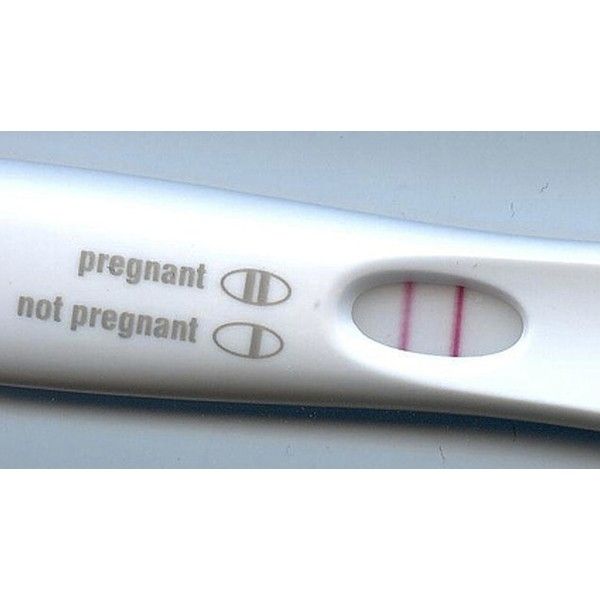
Signs include:
- mild cramping in the lower abdomen
- wetter, clearer, and more slippery vaginal discharge similar to egg white
- a small increase in basal body temperature
- a higher sex drive
Some of these signs, such as basal body temperature, will continue to change after ovulation. For this reason, a person should not use temperature to predict the fertile window.
It may be helpful for someone to track the signs over a few months to get an idea of what is typical for their body.
But they should keep in mind that there are several variables, and the timing of ovulation can change, month-to-month.
Another option is to use an ovulation predictor kit or fertility monitor.
Fertility aids measure the levels of specific hormones in the urine to determine the ovulation day each month. Some devices also identify days of peak fertility.
Using a combination of these methods may provide an individual with the best accuracy.
The following table, based on research from 2015, summarizes a typical menstrual cycle and how fertile a person is likely to be at each stage:
| Day of cycle | Stage | Fertility |
| 1–7 | menstruation | least fertile stage |
| 8–9 | post-menstruation | possible to conceive |
| 10–14 | days around ovulation | most fertile |
| 15–16 | post-ovulation | possible to conceive |
| 17–28 | thickening of uterine lining | less fertile — unlikely to conceive |
To get a more specific range of highest fertility windows based on the day of ovulation, a person can track the first day of their last period in a pregnancy calculator.
Learn more about how to track ovulation here.
To maximize the chances of becoming pregnant, a person should time sexual intercourse to occur during the 2–3 days leading up to, and including, ovulation.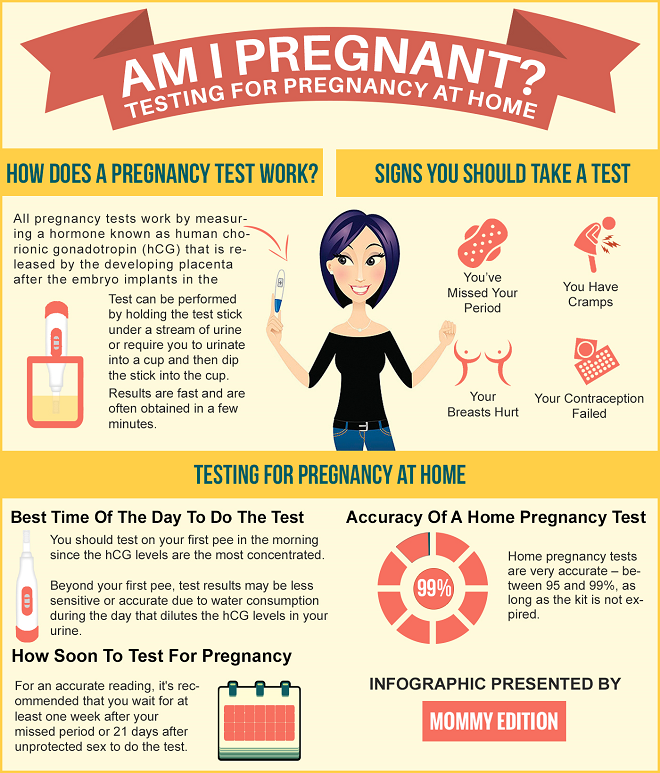 Having sexual intercourse on any of these days may provide a 20–30% chance of pregnancy.
Having sexual intercourse on any of these days may provide a 20–30% chance of pregnancy.
Other tips to improve the chances of conception include:
- Have regular sexual intercourse. Pregnancy rates are highest among partners who have sex every 2 or 3 days throughout the month.
- Avoid smoking. Smoking tobacco reduces fertility and impacts the health of a developing fetus.
- Limit alcohol intake. Alcohol intake can reduce fertility in males and females and harm a fetus.
- Maintain a moderate weight. People who have overweight or underweight are more likely to have irregular ovulation.
- Reduce stress: While the research on whether anxiety or stress can reduce fertility is not conclusive, it is clear that reducing stress can provide some benefit for a person trying to conceive.
- Manage comorbidities: Rule out or treat any medical causes that may contribute to infertility.
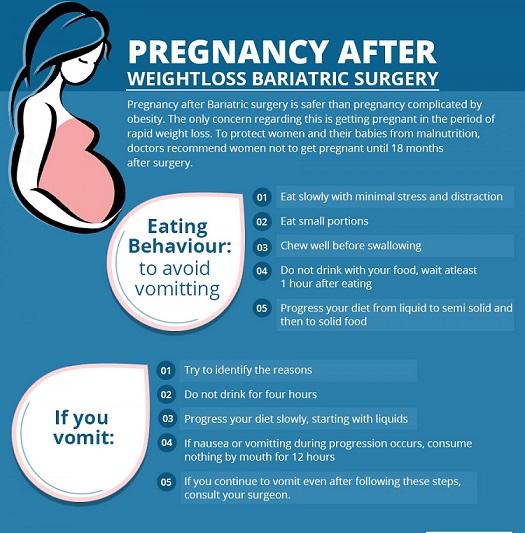 In females, this can include hormonal problems, endometriosis, polycystic ovary syndrome (PCOS), uterine fibroids, autoimmune disorders, and more.
In females, this can include hormonal problems, endometriosis, polycystic ovary syndrome (PCOS), uterine fibroids, autoimmune disorders, and more.
A doctor can assess a couple’s overall health and may be able to identify methods to improve the probability of conception.
Learn more about infertility in males and females here.
What can affect male fertility?
Even if a person is having regular sexual intercourse and tracking ovulation, there can be reasons why the sperm cannot reach the egg.
Causes of male infertility include:
- Sperm morphology: Differences in the size and shape of the sperm can impact fertility.
- Low sperm count: The male partner’s ejaculate fluid does not contain sufficient sperm. Fertility doctors consider a person to have a low sperm count if they have under 15 million sperm per milliliter of semen — the fewer the sperm, the lower the chances of conception.
- Low sperm motility: This means the sperm cannot move as efficiently to reach the egg.

There are a variety of medical conditions that can cause any of these problems with male fertility, including a hormonal imbalance, infection or injury to the testicles, surgery in the area, and diseases such as cancer.
Learn more about sperm count here.
Some people may wish to track their fertility to prevent pregnancy. This is known as the fertility awareness method.
The Centers for Disease Control and Prevention (CDC) charts fertility awareness-based methods of contraception as having a 24% failure rate with typical use.
The chances of pregnancy are lowest during a person’s period and on the days on either side of the period.
However, they may still become pregnant if they have ovulated early or late in their cycle, as sperm can survive in the body for several days.
People wishing to use the fertility awareness method should speak with their doctor first.
Learn more about the types of contraception available here.
Ovulation and the fertile window can change from cycle to cycle, but they may also alter with age.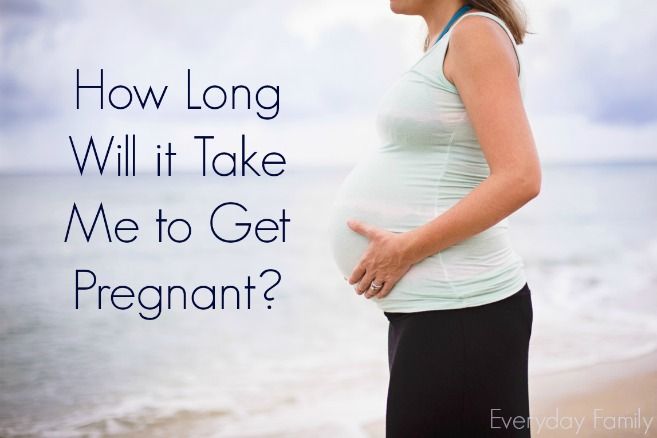 Fertility naturally begins to decline in females in their 30s. By age 40, a person’s chance of conceiving drops to 10% per cycle.
Fertility naturally begins to decline in females in their 30s. By age 40, a person’s chance of conceiving drops to 10% per cycle.
The number of eggs and egg quality decrease with age. Ovulation may also become irregular.
Some medical conditions, such as endometriosis or PCOS, also make conception more difficult.
Learn more about PCOS and fertility here.
Birth control pills aim to prevent unintended pregnancy. The pill prevents pregnancy by releasing synthetic hormones that stop ovulation from occurring and the uterus lining from thickening.
So, even if the ovaries do release an egg, a fertilized egg would be unable to implant in the wall of the uterus. The pill also thickens cervical mucus, making it harder for sperm to reach an egg.
According to the CDC, the birth control pill is more than 99% effective with perfect use but only 91% effective with typical use. This means that around 9 out of 100 women would become pregnant in a year of taking the pill with typical use.
Learn more about the pill and its potential side effects here.
Females who track their fertile window with the aim of getting pregnant should see their doctor for preconception planning.
As well as identifying barriers to conceiving, a doctor can advise on the use of folic acid or prenatal supplements to encourage a safe pregnancy.
Most couples who have frequent sex without contraception will conceive within 12 months.
Women under 35 years of age should see their doctor if they do not conceive after a year of trying. Those over 35 years of age should seek medical advice after 6 months of trying to conceive.
Anyone who has irregular cycles or does not appear to ovulate should also speak with their doctor. There may be an underlying medical cause that is preventing ovulation and conception.
Learn more about irregular periods and pregnancy here.
Here are the answers to some frequently asked questions about when pregnancy can occur.
Can I get pregnant 2 days before my period?
Days 17-28 before the first day of a person’s period are the days when the uterine lining begins to thicken.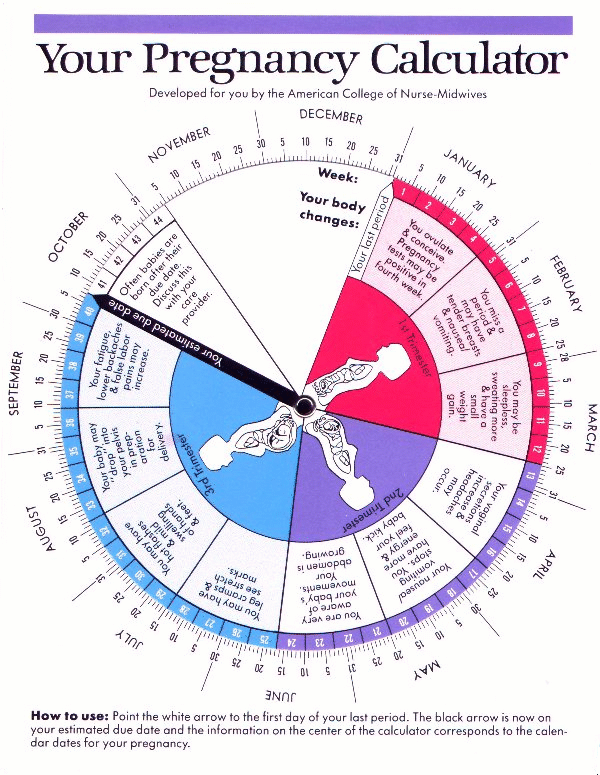 While a person is less likely to conceive during this time, conception is still possible.
While a person is less likely to conceive during this time, conception is still possible.
Learn more about the uterine lining here.
Can I get pregnant on my period?
Although pregnancy is still possible, a female is less fertile while on their period.
Learn more about getting pregnant during a period here.
How many days after your period can you get pregnant?
A female can get pregnant at any time during her menstrual cycle. The likelihood of pregnancy is highest during ovulation, which is typically days 10-14.
Intermenstrual bleeding can occur between periods. To pinpoint the start of a menstrual cycle, a female must correctly identify their actual period.
Learn more about bleeding between periods here.
Each person’s menstrual cycle is different. Generally, it lasts 28–32 days. A person is at their most fertile during ovulation, which occurs around days 10–14.
A person can calculate the exact days of ovulation each month by counting from the first day of their period.
However, certain medical conditions may affect ovulation or impact the sperm’s ability to reach the egg.
People who have been unable to conceive for over a year should talk with a fertility specialist.
Read the article in Spanish.
Is it possible to get pregnant immediately after menstruation
PreviousNext
- Why is it considered impossible to get pregnant after menstruation?
- What is the chance of getting pregnant immediately after menstruation?
- If you can get pregnant after your period, why do people use the calendar method?
- Why can you get pregnant after menstruation?
- Is it possible to estimate my individual risk of getting pregnant right after my period?
- Is it possible to improve the reliability of the calendar method?
Contents:
What is the probability of getting pregnant immediately after menstruation, what factors affect this, is it worth relying on calendar calculations? We will answer your questions.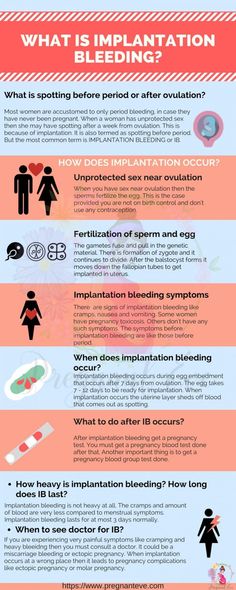
Some women use the calendar method of contraception. It consists in calculating the period when fertilization is impossible. At first glance, the method seems to be quite reliable, because it is based on modern medical knowledge. However, the practice of obstetrics and gynecology shows that the result of its use is often an unplanned pregnancy 1 .
Why is it considered impossible to get pregnant after menstruation?
Since ancient times, scientists have understood that the menstrual cycle is associated with the likelihood of pregnancy. Reasoning about this is found in the writings of Hippocrates, in ancient Chinese treatises on medicine, and in other ancient sources. At the beginning of the 20th century, doctors completely decided on how conception occurs, and realized that it was possible for a very short period after ovulation - the release of an egg from the ovary into the fallopian tube. Shortly thereafter, the Ogino-Knaus method (this is the scientific name for the calendar method) appeared.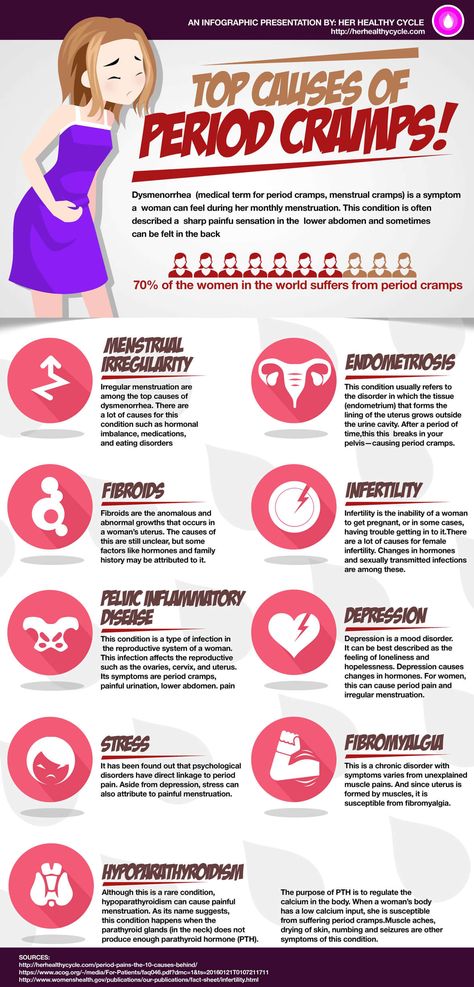
What the Japanese and Austrian gynecologists have suggested can be expressed like this:
According to the adherents of the calendar method, it is impossible to get pregnant during the first seven days of the cycle. From the 8th day after the start of menstruation, you can get pregnant until the 19th day. From the 20th day, the sterile period begins again. These calculations have a sound grain and even a scientific basis, but they are based on the idea of \u200b\u200bthe ideal menstrual cycle and do not take into account many different accidents. And they, as you know, sometimes happen.
For proper pregnancy planning, do not rely on outdated methods. Learn all about modern approaches - watch this video tutorial from reproductologist Anna Ilyina.
What is the probability of getting pregnant immediately after menstruation?
In medicine, there is such a thing as the "Pearl index". This indicator reflects the effectiveness of various methods of contraception and is equal to the number of unplanned pregnancies during the year per 100 women.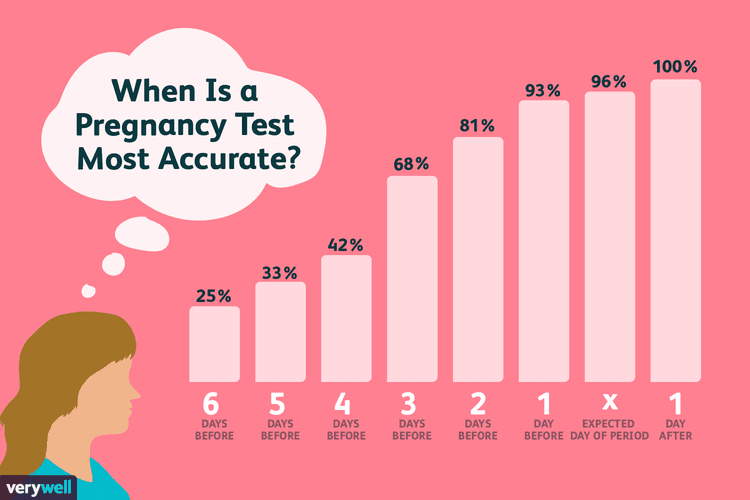 If the index for some method of protection is low, this means that the method is effective, if it is high, the method does not work well.
If the index for some method of protection is low, this means that the method is effective, if it is high, the method does not work well.
Combined oral contraceptives 2 have a Pearl index less than 1 (one unplanned pregnancy within a year among 100 random women using this method). Condoms have 2 or slightly higher, taking into account force majeure that can happen to them during intercourse. One of the most unreliable methods of contraception - coitus interruptus - shows an index of 22 3 . The calendar method even beats him: according to experts, the Pearl index for this method is from 24 1 and above, i.e. about a quarter of women who are protected only according to the calendar are convinced of the ineffectiveness of the method from their own experience.
Here is the answer to the question, what is the probability of getting pregnant after menstruation is very high. All it takes is a small calculation error, a tiny change in the menstrual cycle, an unusual set of circumstances - and you are faced with a choice of what to do with an unplanned pregnancy.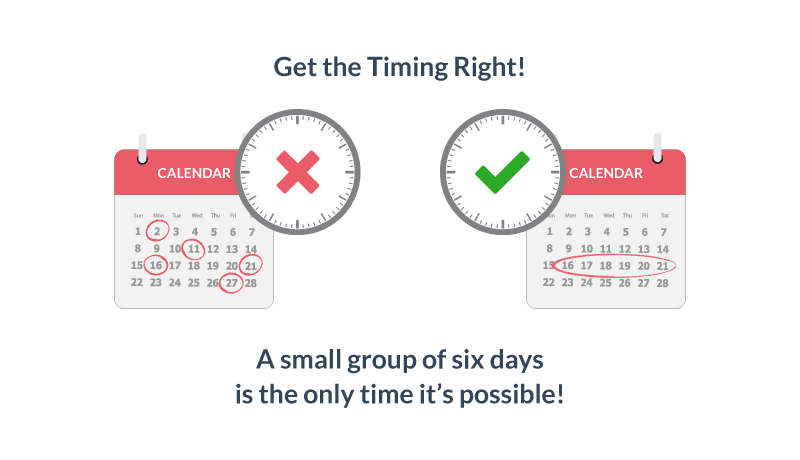
Another important question: is it possible to get pregnant during menstruation? Read in this article.
If you can get pregnant after your period, why do people use the calendar method?
At first, the calendar method was promoted by the Roman Catholic Church. It was believed that believers should not use any other method of contraception, except for this - natural. So in Western countries, the nickname "Vatican roulette" 4 is firmly entrenched behind the unreliable calendar method. These days, the church no longer takes this position, but there are people who continue to use this method for religious reasons.
The method is popular in poor countries for a quite banal reason: contraceptives cost money, and you can look at the calendar for free. To help these women, a special "contraceptive necklace" 5 has been developed. It looks something like this:
The red bead near the clasp indicates the first day of menstruation, the white beads indicate the days on which the probability of pregnancy is minimal, the blue ones indicate the fertile period.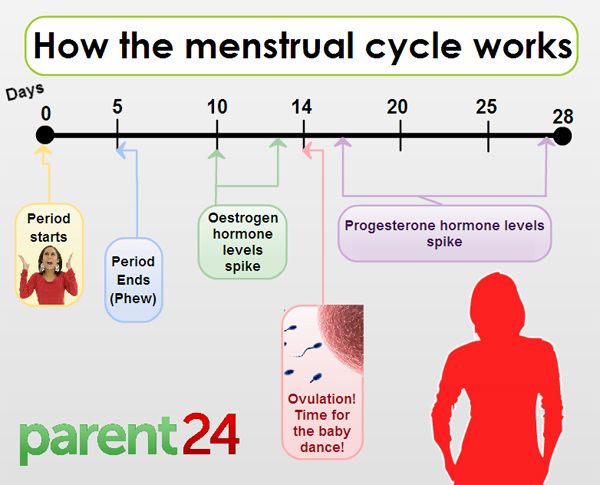 There is a ring on the necklace that needs to be moved every day.
There is a ring on the necklace that needs to be moved every day.
In developed countries, couples most often practice the calendar method due to the reluctance of men to use condoms, and women to take “hormonal pills”. And, of course, because many are still convinced of the effectiveness of this roulette.
Why can I get pregnant after menstruation?
Because the human body is very complex, and sometimes all sorts of unexpected situations happen. Here are just a few of them:
-
In an ideal menstrual cycle, ovulation occurs 14 days before the onset of menstruation 6 . In reality, the maturation of an egg in the ovary can begin as early as the last days of menstruation, and its release almost immediately after it ends. The reason for this may be a change in hormonal levels, severe stress and other factors.
-
Once in the vagina, spermatozoa find themselves in a highly acidic environment and die within a few hours.
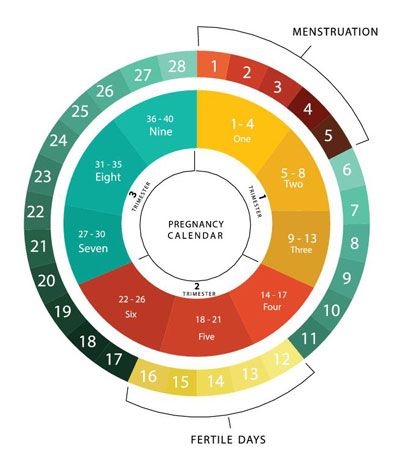 However, those that have reached the cervix or the uterus itself can remain alive for up to 3 days, in some cases even longer 7 . Thus, it may happen that sexual intercourse took place on a safe day, but tenacious spermatozoa waited for the release of the egg.
However, those that have reached the cervix or the uterus itself can remain alive for up to 3 days, in some cases even longer 7 . Thus, it may happen that sexual intercourse took place on a safe day, but tenacious spermatozoa waited for the release of the egg. -
Often women tend to think of any bleeding as menstruation. However, it can also occur for other reasons, such as cervical erosion or too violent sex. Confusing such bleeding with the onset of menstruation, you can make a very serious mistake in the calculations.
Is it possible to estimate my individual risk of getting pregnant immediately after my period?
There are a number of conditions that increase the chance of getting pregnant after your period. If you have one of them, you are at increased risk:
-
Irregular menstruation
-
Very short cycle, less than 21 days
-
Prolonged menses, more than 7 days
Even if you've happily ruled out all of these factors, don't assume that you or your partner don't need protection right after your period. Pregnancy should be desired and planned. Until you are going to become a mother, use more reliable methods - barrier (condom, diaphragm, uterine cap) or hormonal (combined oral contraceptives, intrauterine device, and others).
Pregnancy should be desired and planned. Until you are going to become a mother, use more reliable methods - barrier (condom, diaphragm, uterine cap) or hormonal (combined oral contraceptives, intrauterine device, and others).
If you suspect that fertilization could have occurred, learn how to detect pregnancy before menstruation from our article.
Is it possible to improve the reliability of the calendar method?
It is possible, and there is even a special term for this - the symptothermal method of fertility recognition (STMRP). In addition to tracking the cycle according to the calendar, it includes monitoring the basal temperature and the condition of the cervical mucus. The day before ovulation, the basal temperature rises by about half a degree compared to normal, and the mucus in the cervix becomes wet and viscous.
This method has a low Pearl Index of less than 1, providing a chance of unplanned pregnancy at the level of hormonal contraceptives.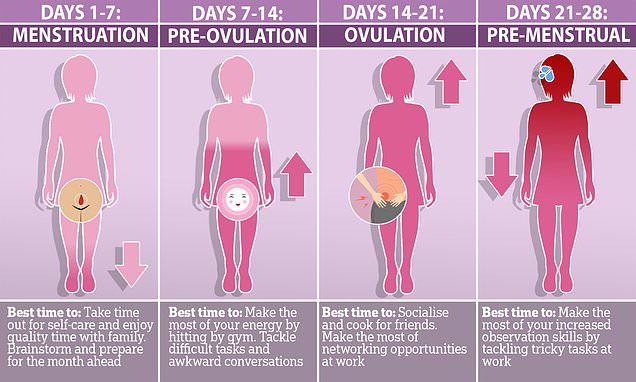 But with one small caveat - only with the right understanding and the most precise observance of all procedures. If you decide to practice this method, it is advisable to undergo training under the guidance of a specialist. It will not be easy to master symptothermal diagnosis on your own.
But with one small caveat - only with the right understanding and the most precise observance of all procedures. If you decide to practice this method, it is advisable to undergo training under the guidance of a specialist. It will not be easy to master symptothermal diagnosis on your own.
Sources:
-
Hatcher, R.A.; Trussel J; Stewart F; et al. (2000). Contraceptive Technology (18th ed.). New York: Ardent Media. ISBN 0-9664902-6-6.
-
Ammer, Christine (2009). The encyclopedia of women's health (6th ed.). New York: Facts On File. pp. 312–15. ISBN 978-0-8160-7407-5.
-
Division of Reproductive Health, National Center for Chronic Disease Prevention and Health Promotion, Centers for Disease Control and Prevention (CDC) (June 21, 2013). U.S. Selected practice recommendations for contraceptive use, 2013: adapted from the World Health Organization Selected practice recommendations for contraceptive use, 2nd edition.
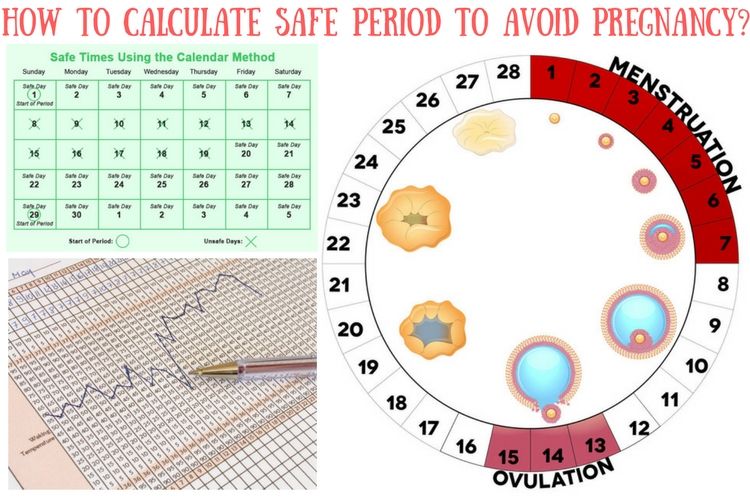 MMWR Recommendations and Reports. 62(5): 1–60.
MMWR Recommendations and Reports. 62(5): 1–60. -
Vatican Roulette. Definition at Urban Dictionary.
-
Standard Days Method and CycleBeads ® .
-
GeirssonRT (1991). Ultrasound instead of last menstrual period as the basis of gestational age assignment. Ultrasound in Obstetrics and Gynecology. 1(3):212–9.
-
Clubb E. Natural methods of family planning. JR Soc Health. 1986 Aug;106(4):121-6.
Follow us on Yandex Zen
| Authors: Huggies experts |
Pregnancy after menstruation
Pregnancy after menstruationSite search
Preambula Bot
Preambula Bot
Online
List of dialogues
Available dialogues
You can communicate with doctors and ask any questions to the bot
Preambula Bot
To see dialogues with doctors, you need to log in
Hello. If you need to contact a doctor, sign up for an online consultation:
Conditions for the consultation
Sign up for a consultation
5
Pregnancy after menstruation
Share
The question of unwanted, unexpected pregnancy is occupied by the minds of both the beautiful half of humanity and the stronger sex. There was a strong, but unsupported from a medical point of view, opinion that menstruation and a few days before and after it is an excellent natural contraceptive that guarantees 100% protection against pregnancy.
But is it?
It is these questions that friends and girlfriends or complete strangers ask each other on forums and chats. The answers to them can be heard different, to a greater extent based on initial knowledge about the process of fertilization and the so-called monthly calendar of the menstrual cycle, when safe days are calculated.
Unfortunately, medicine has long proven that there are no safe days. And the question of whether it is possible to get pregnant after menstruation is just as meaningless as the question "Is it possible to get pregnant with protection?".
In fact: all women are different, and ovulation cycles are also different. And this means that the movement of an egg ready for fertilization can occur on any day (these terms are affected by the state of health, hormonal levels, stressful situations, etc.). Accordingly, there are simply no safe days and asking if it is possible to get pregnant after menstruation is simply unreasonable. You can ... and before, and on time, and after. Any day.
By the way, there is an opinion that only one way gives a 100% guarantee against pregnancy - the absence of a classic sexual intercourse. As it turns out, even this view is wrong. It is not for nothing that the topics “Is it possible for a virgin to get pregnant?”, “Is it possible to get pregnant from lubrication?”, “Is it possible to get pregnant during petting?” began to appear on the forums.

